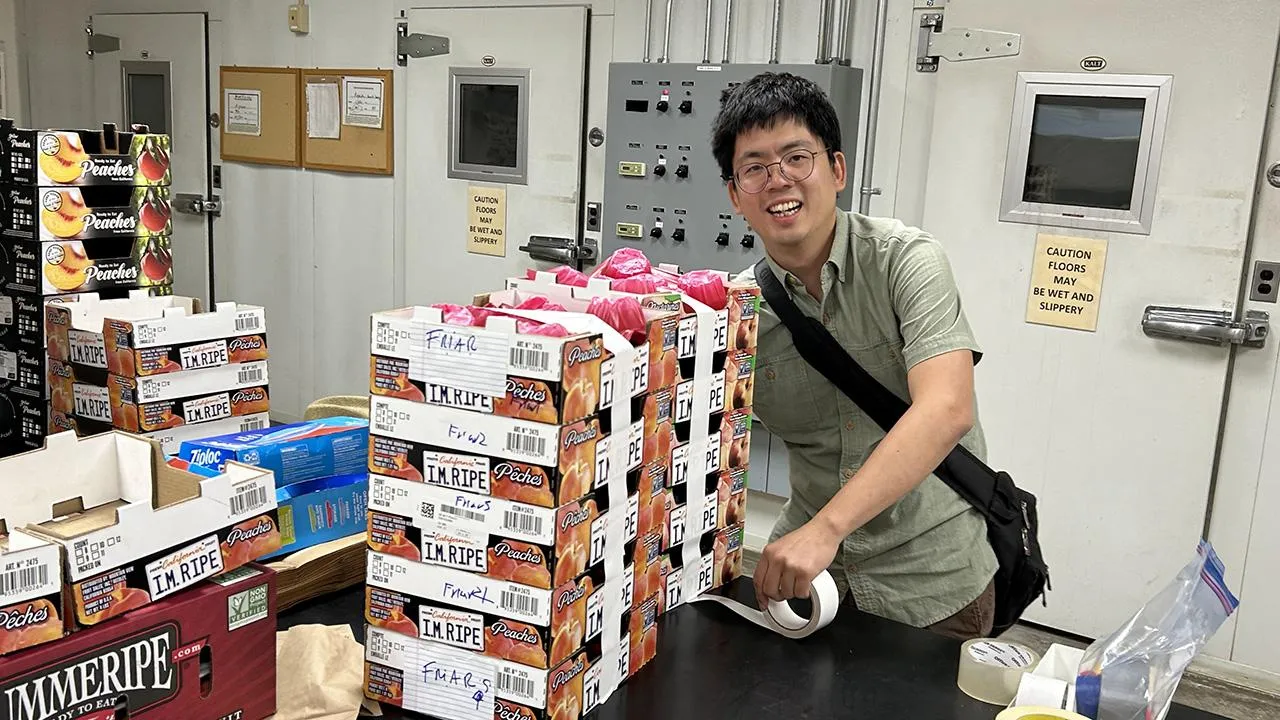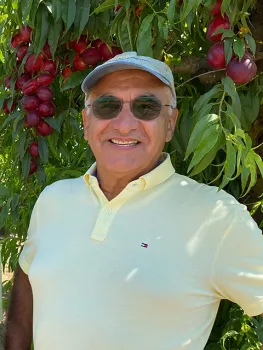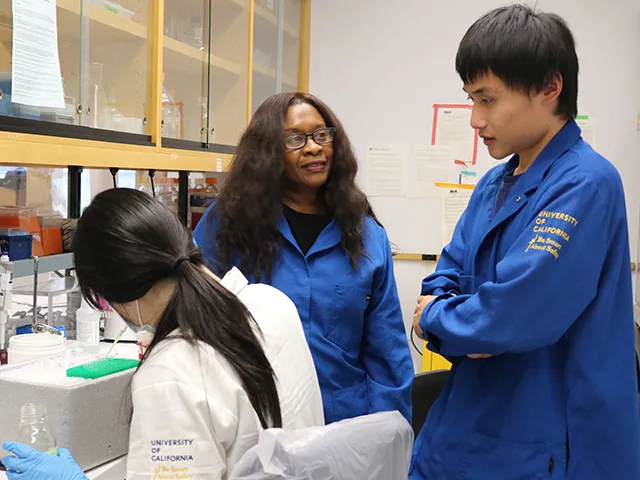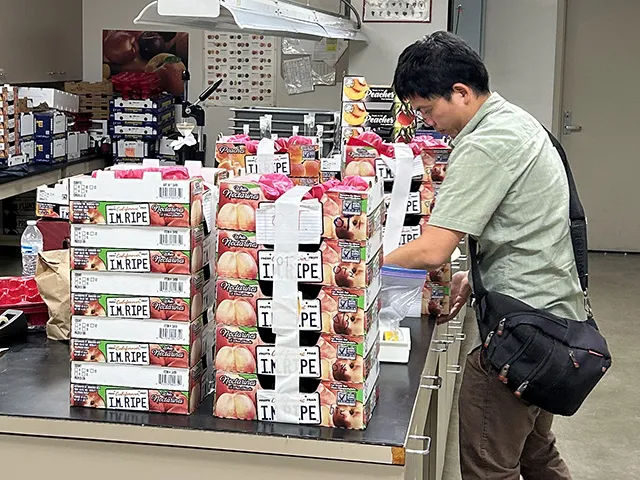
Piles of plums in shades of red and purple are in the stores now, and like Goldilocks, shoppers are looking for fruit that’s just right: A bite through just-firm-enough skin offers pleasant resistance before giving way to just-soft-enough flesh underneath, then an explosion of juicy flavor and tangy sweetness.
But getting that balance is tough. Growers want to pick fruit early enough so it doesn’t bruise or spoil during shipping, fetching a higher price. Grocery managers want fruit that lasts on the shelves. Consumers want it to ripen to perfection and last a few more days at home.

Now, a team of researchers in the Department of Plant Sciences has laid the foundation for understanding the genes that control the ripening process. Po-Kai Huang, a postdoctoral scholar, discovered three groups of genes that correspond to fruit softening at different rates. He also found other factors that contribute to the softening of fruit.
While more work needs to be done to untangle seemingly contrary factors in fruit ripening, Huang’s work points to areas that could help fruit-tree breeders in the future. Plums are a model for other fruits in the Prunus family, including peaches, apricots and prunes. Advances in this area could save growers money and get better prices for their crop. Reducing waste would also prevent pollution, because damaged fruit often winds up in landfills and gives off greenhouse gases as it rots.
This work could impact a large swath of the California fruit industry. Plums, peaches, apricots and prunes together were valued at nearly $722 million in 2022, according to the California Department of Food and Agriculture. The state produces most of these fruits in the United States. However, these crops face a broad range of challenges, and production has declined for apricots in recent years.
Huang worked on the project with Carlos Crisosto, a fruit tree expert and recently retired distinguished professor of Cooperative Extension in the department. Crisosto conceived the idea amid earlier work to understand the biology of how fruit softens at maturity and after it’s harvested. Diane Beckles, a postharvest biologist and professor also in the department, contributed by supervising the molecular biology, data analysis and writing. Part of the research took place at the Kearney Agricultural Research and Extension Center, operated in Parlier, Calif., by University of California Agriculture and Natural Resources. Their paper was published in the journal BMC Plant Biology.

New: Which genes control the ripening process
Huang looked at several varieties of plums with different ripening patterns – some ripening earlier and some later. As the fruit ripens, it produces the hormone ethylene, which causes the fruit to soften, Beckles explained. Earlier research showed that early-ripening plum varieties make a lot of ethylene, while varieties that ripen and soften more slowly make less ethylene.
Beckles explained Huang’s quest for the genes that control these different rates of ripening:
“First, Po-Kai's deep dive into the genomic sequence of plum and related species helped him to develop a comprehensive list of the number and sequences of all the plum softening genes. This had been under-reported before, because these families are large and complicated. This was the first important contribution.
“Next, he made comparisons of how these softening and other ethylene-related genes are expressed during fruit development of the three types of plums,” Beckles wrote.
Huang found that the ripening genes acted differently depending on the variety. How much these genes were turned on matched how much ethylene the fruit made.
In addition to ethylene, Huang found two more pathways that are important in the fruit ripening process: First is the role of jasmonate, another important hormone that has many jobs in plant and fruit development, including ripening. Second is the role of proteins called NAC transcription factors. These turn genes on and off to regulate growth, development and other processes.
“Finally, he asked if the patterns of gene expression he found in these three types of plums would be similar across different plum species grown in other years and locations,” Beckles continued.
Huang looked at the genes of interest for fruit from this larger sample and compared their production of ethylene and jasmonic acid. He found most of the genes he looked at did, indeed, have a hand in the ripening process.
But some genes didn’t follow the expected pattern, Beckles said, pointing to more research ahead to understand all the factors involved in this complex phase of fruit.

Genetic tools for breeders
This work “opens up options to use plant growth regulators to control maturation and ripening on the tree,” Crisosto said. “Steps also can be taken during harvesting that affect ripening off the tree.”
Because plums are harvested by hand, “this approach would allow growers to synchronize harvesting and reduce the number of picks. It may even open the possibility for future adaptation to mechanical harvesting,” Crisosto wrote.
“Plant biologists and breeders can use this new genetic information to make more effective crosses in their breeding programs,” Crisosto added.
Related links
Read the paper “Comprehensive transcriptional analysis of ethylene and softening regulation in plums with distinct climacteric ripening behaviors."
Many thanks to the folks at the Kearney Agricultural Research and Extension Center in Fresno County, where Huang conducted part of his research.
https://www.plantsciences.ucdavis.edu/news/huang-crisosto-beckles-plums

